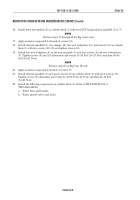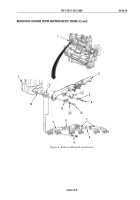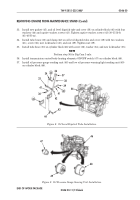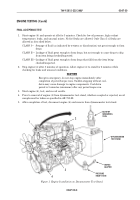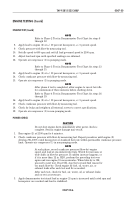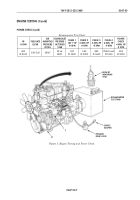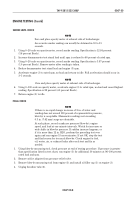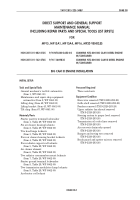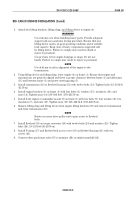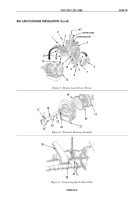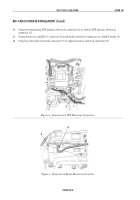TM-9-2815-225-34-P - Page 430 of 736
TM 9-2815-225-34&P
0047 00
0047 00-6
ENGINE TESTING (Contd)
ENGINE TEST (Contd)
NOTE
Refer to Phase 2 Test in Dynamometer Test Chart for steps 8
through 12.
8.
Apply load to engine (2) at +/- 10 percent horsepower, +/- 5 percent speed.
9.
Check pressure with blow-by measuring tool.
10.
Set idle speed to 600 rpm and set full load governed speed to 2100 rpm.
11.
Adjust load and rpm until specified readings are obtained.
12.
Operate air compressor (1) in pumping mode.
NOTE
Refer to Phase 3 Test in Dynamometer Test Chart for steps 13
through 15.
13.
Apply load to engine (2) at +/- 10 percent horsepower, +/- 5 percent speed.
14.
Check crankcase pressure with blow-by measuring tool.
15.
Operate air compressor (1) in pumping mode.
NOTE
After phase 4 test is completed, allow engine to run at low idle
for a minimum of three minutes before shutting down.
Refer to Phase 4 Test in Dynamometer Test Chart for steps 16
through 19.
16.
Apply load to engine (2) at +/- 10 percent horsepower, +/- 5 percent speed.
17.
Check crankcase pressure with blow-by measuring tool.
18.
Check for leaks and retighten all external screws to correct specifications.
19.
Operate air compressor (1) in non-pumping mode.
POWER CHECK
CAUTION
Do not shut engine down immediately after power check is
complete. Serious engine damage may result.
1.
Run engine (2) at 2100 rpm for 4 minutes.
2.
Check crankcase pressure with blow-by measuring tool. Repeat procedure until engine (2)
develops 96–100% rated horsepower at standard fuel rate within permissible crankcase pressure
limit. Operate air compressor (1) in non-pumping mode.
NOTE
At each phase, record crankcase pressure (blow-by) engine
speed, and load at one-minute intervals. Watch for increases or
wide shifts in blow-by pressure. If sudden increase happens, or
if it is more than 12 in. H2O, perform the preceding test over
again and run engine 15 more minutes. When blow-by is OK,
proceed to next test. If not OK, stop the test and find reason for
too much blow-by. Check engine for fuel, oil, water, air, or
exhaust leaks after each test and fix as needed.
After each test, check for fuel, air, water, oil, or exhaust leaks
and correct as necessary.
3.
Apply dynamometer test stand load as engine (2) rpm is increased until rated rpm and
horsepower are reached and load is stabilized.
Back to Top

